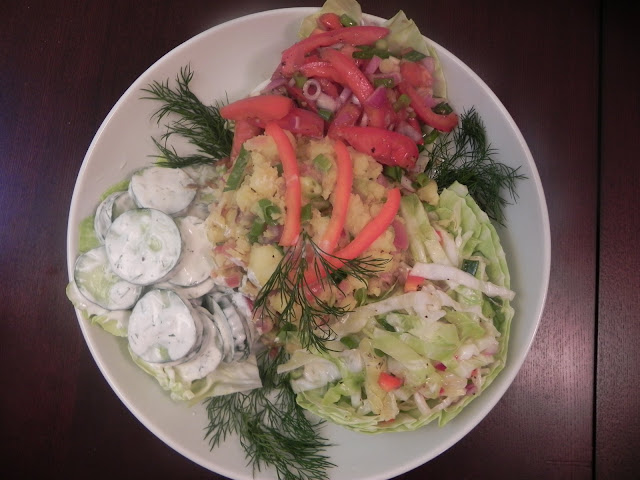"Caroling, Caroling Now We go..." sometimes in costume, sometimes with lanterns, often in tune and always with bellies warmed by the comforting glow of hearty soups and Caroling Sandwiches - so named not because they sing but because we always prepare them for this annual event. I acquired this recipe for hot ham and Swiss cheese sandwiches in soft buttery rolls (carolers always scorn my short-cut efforts when I use anything other than homemade) - from a friend who had lived in Israel for several years. I don't know the origin of this recipe but I doubt it is Israeli due to the unkosher character of the ham cavorting with cheese, no less, but the piquante nutty velvet of the butter and mayo sauce in trio with smoky ham and melted Swiss cheese bursting at the seams, is as glorious as the music of any heavenly choir!
Caroling Sandwiches
12 soft ranch or potato rolls, split
12 slices deli ham
12 slices swiss cheese
1/2 cup soft butter
2 tab. finely minced green onion
1 tsp. worcestershire sauce
1 tsp. mustard
1/2 cup finely shredded parmesan cheese
1/4 cup mayonnaise
2 tab. poppy seeds
-Blend until smooth: butter, onion, worcestershire sauce, mustard, cheese, mayo and seeds.
-Spread liberally on each roll half. Place slice of ham and cheese in middle of each roll. Place filled rolls on cookie sheet and cover loosely with foil. Bake at 350 degrees for 15-20 minutes until cheese is melted.
Potato Refrigerator Rolls (A favorite for Caroling Sandwiches)
1 pkg. active dry yeast
1 1/2 cups warm mwater
2/3 cups sugar
2 tsp. salt
2/3 cup shortening
2 eggs
1 cup lukewarm mashed potatoes
7 - 7 1/2 cups flour
-Dissolve yeast in warm water. Stir in sugar, salt, shortening, eggs, potatoes and 4 cups of the flour. Beat until smooth. Mix in enough remaining flour to make dough easy to handle.
-Turn dough onto lightly floured surface. Knead until smooth and elastic, about 5 minutes. Place in greased bowl, then turn greased side up. Cover bowl tightly. Refrigerate at least 8 hours or until ready to use. (Dough can be kept up to 5 days in refrigerator.)
-Punch down dough by kneading lightly. Shape dough as desired for rolls. Let rise in warm place, covered with towel or plastic wrap for 1 1/2 hours before baking. Heat oven to 350 degrees. Bake 15 to 20 minutes.
Caroling Sandwiches
12 soft ranch or potato rolls, split
12 slices deli ham
12 slices swiss cheese
1/2 cup soft butter
2 tab. finely minced green onion
1 tsp. worcestershire sauce
1 tsp. mustard
1/2 cup finely shredded parmesan cheese
1/4 cup mayonnaise
2 tab. poppy seeds
-Blend until smooth: butter, onion, worcestershire sauce, mustard, cheese, mayo and seeds.
-Spread liberally on each roll half. Place slice of ham and cheese in middle of each roll. Place filled rolls on cookie sheet and cover loosely with foil. Bake at 350 degrees for 15-20 minutes until cheese is melted.
Potato Refrigerator Rolls (A favorite for Caroling Sandwiches)
1 pkg. active dry yeast
1 1/2 cups warm mwater
2/3 cups sugar
2 tsp. salt
2/3 cup shortening
2 eggs
1 cup lukewarm mashed potatoes
7 - 7 1/2 cups flour
-Dissolve yeast in warm water. Stir in sugar, salt, shortening, eggs, potatoes and 4 cups of the flour. Beat until smooth. Mix in enough remaining flour to make dough easy to handle.
-Turn dough onto lightly floured surface. Knead until smooth and elastic, about 5 minutes. Place in greased bowl, then turn greased side up. Cover bowl tightly. Refrigerate at least 8 hours or until ready to use. (Dough can be kept up to 5 days in refrigerator.)
-Punch down dough by kneading lightly. Shape dough as desired for rolls. Let rise in warm place, covered with towel or plastic wrap for 1 1/2 hours before baking. Heat oven to 350 degrees. Bake 15 to 20 minutes.

































.JPG)
.JPG)



